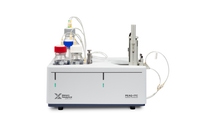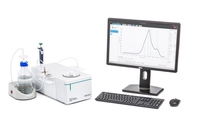Advanced biological process analysis
Proteins rarely act alone, but rather interact with each other to carry out various cellular functions.
Studying these protein-protein interactions provides crucial insights into a wide range of biological processes.
Proteins facilitate most biological processes in a cell. This includes gene expression, cell growth, proliferation, nutrient uptake, morphology, motility, intercellular communication, and apoptosis.
Protein expression is a dynamic process that responds to various stimuli. Specific proteins may not always be expressed or activated for certain tasks. Cells also vary in their protein expression, which can complicate the study of protein function in the appropriate biological context. However, with careful investigation and analysis, these challenges can be overcome.
Before the late 1990s, protein function analyses primarily focused on individual proteins. However, since most proteins must interact with other proteins to function, they should be studied in the context of their interacting partners. The publication of the human genome and the development of proteomics have made it essential to understand protein interactions and identify biological networks to understand their function within the cell.
Important types of protein interactions include:
In protein-protein interactions, proteins interact with each other to carry out specific functions in cells.
Since nearly all biological processes involve one or more PPIs, studying these interactions helps us understand the molecular mechanisms interactions within these processes, including:
![[shutterstock_362386109 2.jpg] shutterstock_362386109 2.jpg](https://dam.malvernpanalytical.com/224f564e-8075-44a3-b7f8-b1ca0098e486/shutterstock_362386109%202_Original%20file.jpg)
|
Protein-protein interactions can be studied with several experimental techniques, each with unique advantages and limitations. The insights that these studies provide depend on the selected analysis method.
Some (but not all) of the most widely used PPI analysis methods include:
| Method | Description | Malvern Panalytical instrument |
|---|---|---|
| Nuclear magnetic resonance (NMR) spectroscopy | NMR spectroscopy provides atomic-level structural information, revealing details about protein conformational changes upon binding. | -- |
| Tandem affinity purification-mass spectroscopy (TAP-MS) | TAP provides a purified protein complex which can be ran on a mass spectrometer (MS) to map protein-protein interactions. | -- |
| Grating-coupled interferometry (GCI) | This label-free, real-time, and surface-based technology allows researchers to rapidly and accurately measure kinetic rates, determine affinity, and monitor the concentrations of even low-abundance interacting analytes in crude samples such as biofluids. | |
| Surface plasmon resonance (SPR) | SPR allows for real-time monitoring of protein interactions at the surface of a sensor chip, enabling precise determination of binding kinetics and affinities. SPR is a label-free technique that uses relatively small quantities of materials. This allows for precise, accurate analysis of protein interactions. | -- |
| Isothermal titration calorimetry (ITC) | ITC measures the heat released or absorbed during binding events, providing crucial thermodynamic information for understanding interaction mechanisms. | |
| Neighboring technologies: | ||
| Differential scanning calorimetry (DSC) | DSC measures the thermal stability of proteins, which is useful for stability studies, bio-similarity assessments, and batch-to-batch comparability assessments. DSC measures thermal stability by monitoring the heat change of a molecule’s denaturation when heated at a constant rate. | |
|
Electrophoretic light scattering (ELS)
|
ELS measures particle mobility and charge. DLS measures the particle size of dispersed systems from sub-nanometers to several micrometers in diameter. Combining these techniques gives a more comprehensive overview of protein-protein interactions – useful for developing interventions that target specific molecular interactions. | |



Malvern Panalytical instruments have been used in several studies that analyze PPIs. A few examples are below:
Grating-coupled interferometry (GCI) with the WAVEsystem was used to explore the binding between several plant receptors and their ligands, and the role of a coreceptor (SERK3). Where the individual receptors have significantly different binding affinities for their respective ligands, the SERK3 ectodomain binds to the ligand-associated receptors with similar binding kinetics.
GCI with the WAVEsystem was used to analyze interactions with synthetically produced ‘receptor mimics’ of cell surface receptors, which are often of interest as drug targets.
Isothermal Titration Calorimetry (ITC) on the MicroCal demonstrated that changing the backbone of the protein can change the protein-protein interaction in voltage-gated calcium channels.
This paper reviewed the uses of ITC alongside other technologies to investigate the characteristics of constrained peptides that inhibit protein-protein interactions.

WAVEsystemNext-generation bioanalytical instruments for drug discovery and life sciences for both industry and academic research |

PEAQ-ITCThe Gold Standard for measuring affinity and stoichiometry |

MicroCal PEAQ-DSCGold standard protein stability analysis for research applications |

Zetasizer Advance RangeLight Scattering for every application |
|
|---|---|---|---|---|
| Technology | ||||
| Grating-coupled interferometry (GCI) | ||||
| Isothermal Titration Calorimetry (ITC) | ||||
| Differential Scanning Calorimetry (DSC) | ||||
| Electrophoretic Light Scattering | ||||
| Dynamic Light Scattering | ||||